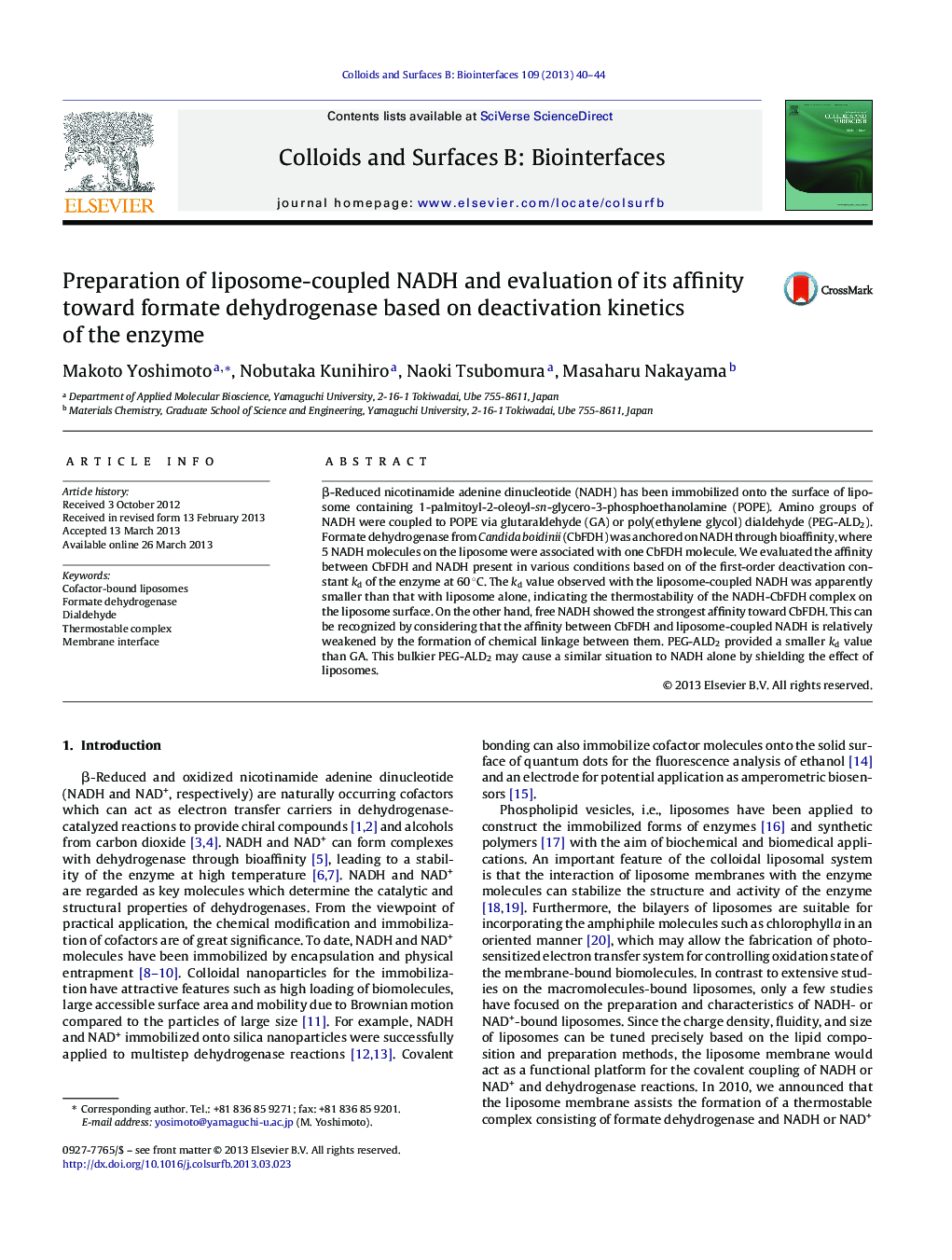| Article ID | Journal | Published Year | Pages | File Type |
|---|---|---|---|---|
| 600074 | Colloids and Surfaces B: Biointerfaces | 2013 | 5 Pages |
•NADH was efficiently coupled to the surface of liposomes using PEG-dialdehyde.•NADH density and configuration of CbFDH on liposomes were characterized.•Liposomal NADH-dehydrogenase affinity was evaluated by their thermostability.
β-Reduced nicotinamide adenine dinucleotide (NADH) has been immobilized onto the surface of liposome containing 1-palmitoyl-2-oleoyl-sn-glycero-3-phosphoethanolamine (POPE). Amino groups of NADH were coupled to POPE via glutaraldehyde (GA) or poly(ethylene glycol) dialdehyde (PEG-ALD2). Formate dehydrogenase from Candida boidinii (CbFDH) was anchored on NADH through bioaffinity, where 5 NADH molecules on the liposome were associated with one CbFDH molecule. We evaluated the affinity between CbFDH and NADH present in various conditions based on of the first-order deactivation constant kd of the enzyme at 60 °C. The kd value observed with the liposome-coupled NADH was apparently smaller than that with liposome alone, indicating the thermostability of the NADH-CbFDH complex on the liposome surface. On the other hand, free NADH showed the strongest affinity toward CbFDH. This can be recognized by considering that the affinity between CbFDH and liposome-coupled NADH is relatively weakened by the formation of chemical linkage between them. PEG-ALD2 provided a smaller kd value than GA. This bulkier PEG-ALD2 may cause a similar situation to NADH alone by shielding the effect of liposomes.
Graphical abstractFigure optionsDownload full-size imageDownload as PowerPoint slide
